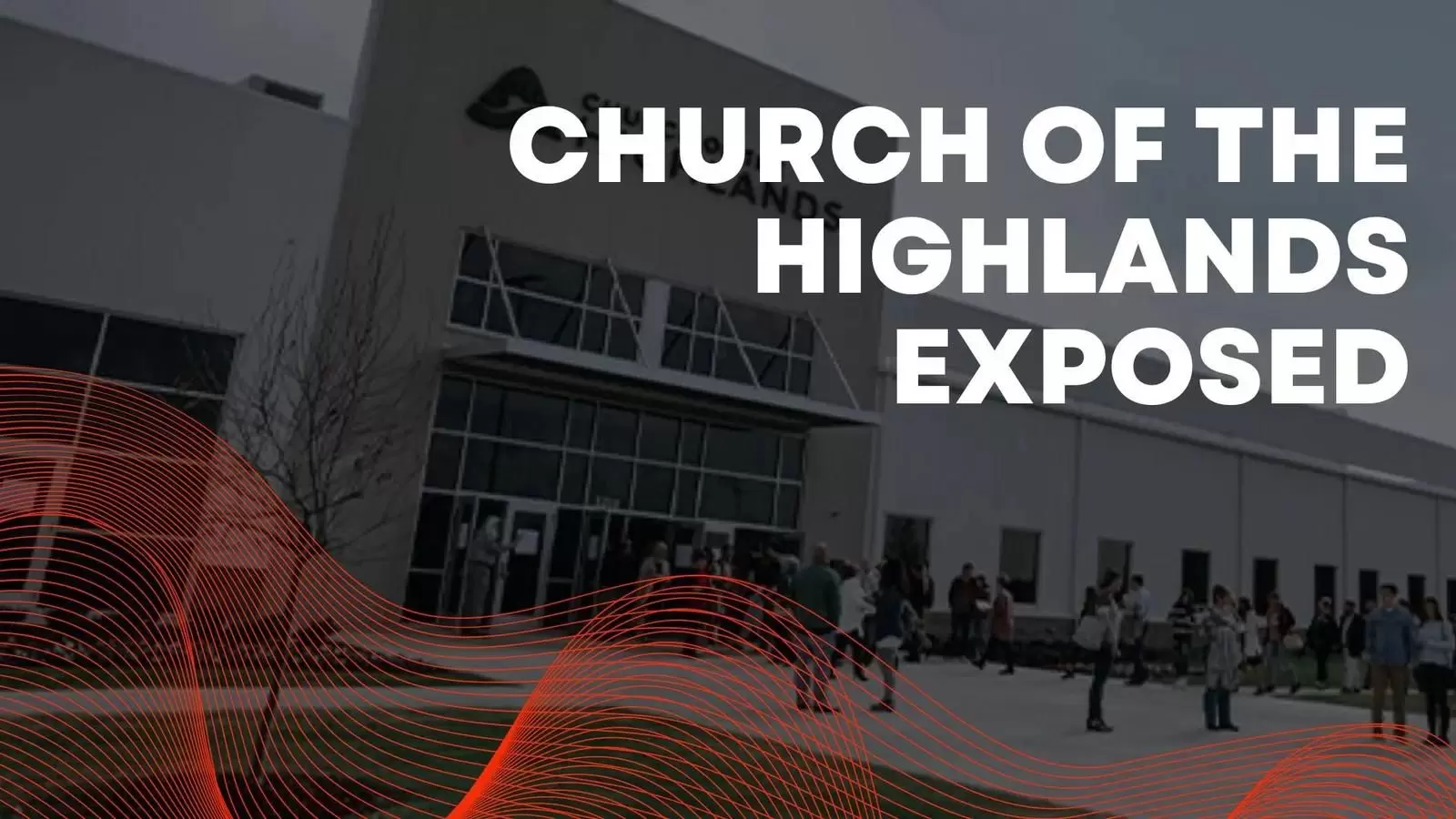Introduction
Church of the Highlands, founded in 2001 by Pastor Chris Hodges, has grown into one of the largest and most influential megachurches in the United States. Located in Birmingham, Alabama, it has expanded rapidly, with multiple campuses and a large congregation. Known for its modern worship style, community outreach, and high-tech approach to ministry, Church of the Highlands has become a model for many churches aiming to grow their congregations in today’s digital age.
However, with great growth comes scrutiny. While many view Church of the Highlands as a beacon of faith and community, others question its practices, leadership, and overall impact on both members and the broader Christian community. This article delves into the church’s rise to prominence, the controversies surrounding its leadership, and the positive aspects that have drawn thousands to its doors. We aim to provide an in-depth, balanced view of the Church of the Highlands and its place within the modern megachurch movement.
The Rise of Church of the Highlands
Founding and Early History
The story of Church of the Highlands begins with Chris Hodges, who, after serving in various churches across the country, felt called to start a new church in Birmingham, Alabama. The church’s first service was held in 2001, with only a small group of people in attendance. Over the next few years, the church grew rapidly, attracting thousands of members. The church’s appeal was partly due to its contemporary approach to worship, which combined traditional Christian teachings with modern music and multimedia elements.
In a short span, Church of the Highlands became one of the fastest-growing churches in the country. The church’s commitment to meeting people where they are, both physically and spiritually, helped it expand rapidly. By using cutting-edge technology and offering multiple services, Church of the Highlands quickly became a dominant force in the region. The church’s innovative approach to ministry—combining practical teachings with a focus on personal growth and community service—appealed to many, particularly young families and professionals.
Church’s Impact on Local Communities
Church of the Highlands has made a significant impact on the local community in Birmingham and beyond. One of its core missions is to engage in community service and outreach. The church has launched numerous initiatives, including programs that support the homeless, feed the hungry, and provide disaster relief. The church’s focus on meeting practical needs has made it a staple in the region, as it continues to serve not just its members, but also the broader community.
Additionally, Church of the Highlands has been known for its small group programs, where members can connect on a deeper level. These groups provide a sense of belonging and community, which is often a key factor in the church’s growth. Through these efforts, Church of the Highlands has positioned itself as a pillar of support, not just for its members but also for those in need within the larger community.
The Controversies Surrounding Church of the Highlands
Allegations of Cult-like Behavior and Control
Despite its success, Church of the Highlands has faced significant criticism. Some former members have described the church as cult-like, citing a sense of control over personal lives. Critics argue that the church’s leadership, especially Pastor Chris Hodges, has a strong influence on the spiritual and even personal decisions of its members. This level of control has raised concerns about the autonomy of individual members and whether the church fosters a healthy, balanced faith.
Some former members claim that the church fosters a culture of dependence on the leadership, discouraging questioning or dissent. They argue that the church’s emphasis on loyalty and submission to authority creates an environment where individuals may feel pressured to conform to the church’s ideals, sometimes at the expense of their own personal beliefs. These allegations have sparked debates about the fine line between strong spiritual leadership and undue control.
Criticism of Chris Hodges’ Leadership
Chris Hodges, as the founder and lead pastor, has been at the center of much of the church’s success, but also its controversies. Some critics have pointed to past scandals involving his leadership, questioning his accountability and transparency. While Hodges has addressed some of these concerns publicly, the scrutiny over his personal and professional life continues to linger.
The church’s rapid growth has also been seen as both a strength and a potential weakness. As the church expanded, some argue that it may have lost its original focus on community and discipleship in favor of growth and numbers. While the church’s influence is undeniable, its critics believe that such a large-scale operation can lead to a lack of personal connection, which is often a key component of a healthy spiritual community.
The Positive Aspects of Church of the Highlands
Strong Community and Sense of Belonging
One of the standout features of Church of the Highlands is its ability to create a strong sense of community. Despite its large size, the church offers numerous small group programs where individuals can build deeper relationships with others. These groups foster a sense of belonging, which is crucial for personal growth and spiritual development. Many members of the church have shared that they feel truly supported by their community, which has played a pivotal role in their spiritual journeys.
Additionally, Church of the Highlands places a significant emphasis on discipleship, encouraging members to grow in their faith through study, prayer, and service. This focus on personal development helps individuals not only grow closer to God but also to each other. Whether through community service projects or small group gatherings, the church works hard to maintain a welcoming environment where people can find support and encouragement.
Charitable Works and Social Justice Initiatives
Another aspect of Church of the Highlands that sets it apart from many other megachurches is its commitment to charitable works and social justice. The church has launched numerous initiatives to support the underprivileged, including food banks, addiction recovery programs, and global missions. Church of the Highlands’ efforts to address both local and global needs have earned it a reputation as a church that cares deeply about making a tangible difference in the world.
Through its outreach programs, Church of the Highlands has made a significant impact on many lives. Its focus on helping the marginalized and serving those in need has attracted praise from both members and non-members alike. These charitable efforts not only align with Christian teachings but also provide a powerful testimony of the church’s commitment to living out its faith through action.
The Mega-Church Movement and Its Impact on Christianity
Defining the Megachurch Phenomenon
The rise of megachurches like Church of the Highlands represents a broader trend in modern Christianity. A megachurch is typically defined as a church with a weekly attendance of 2,000 or more. These churches are known for their large-scale operations, contemporary worship services, and heavy reliance on technology and multimedia to reach a wide audience. The megachurch phenomenon has grown significantly in recent decades, with thousands of such churches existing worldwide.
Megachurches like Church of the Highlands have become a powerful force within Christianity, attracting thousands of members who are drawn to their dynamic services and community-oriented focus. These churches often provide a sense of connection, belonging, and purpose that many find lacking in smaller, traditional congregations. However, the rapid growth of these churches also raises questions about the sustainability of such models and their impact on individual spiritual growth.
The Role of Church of the Highlands in the Broader Megachurch Trend
Church of the Highlands has played a key role in shaping the modern megachurch movement. Its blend of traditional Christian values with contemporary worship, community engagement, and technological innovation has set a blueprint for other churches to follow. The church’s success has influenced many other religious organizations to adopt similar strategies, including multi-campus models and the use of online streaming to reach a broader audience.
While Church of the Highlands has been a trailblazer in this movement, it also reflects the challenges that come with such rapid growth. Critics argue that the megachurch model, while successful in attracting large numbers of people, may lack the depth and personal connection found in smaller congregations. This tension between growth and intimacy remains one of the most debated aspects of the megachurch movement.
Conclusion
Church of the Highlands stands as both a beacon of hope and a point of contention in the world of modern Christianity. Its rapid growth, commitment to community, and focus on outreach have earned it widespread recognition and admiration. However, its size, leadership, and control over members have sparked significant controversy, leading some to question the long-term effects of such a large-scale church operation.
As the megachurch movement continues to grow, church of the highlands exposed of the Highlands will likely remain a key player in shaping the future of Christianity. Whether it will continue to balance its growth with personal spiritual development, or if it will face further scrutiny for its practices, remains to be seen. Regardless, the church’s impact on its members and the broader community cannot be denied.





